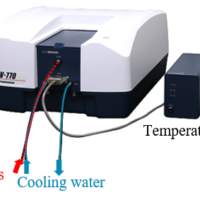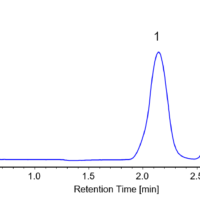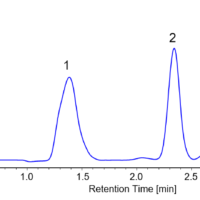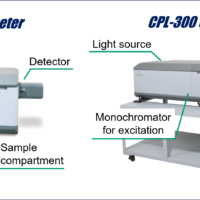Optical rotation and chirality
Many medicines and foods contain optical active (chiral) compounds. Fig. 5 shows the L- and D-forms of glyceraldehyde, which normally exists in the D-form in nature. Chiral medicines and foods exhibit different properties and effects with enantiomers that are mirror images, because the organism in which they work also has chiral properties. For example, the L-form of menthol is used as a refreshing agent in chewing gum and toothpaste, but the D-form is not effective for this purpose. Similarly, Dopa, a treatment for Parkinson’s disease, is effective in its L-form only. Thus, it is necessary to know which substance is used and how pure it is, because the L- and D-forms act differently. If a chiral molecule has an absorption band, CD measurements can be performed, but ORD and optical rotation measurements are applicable even if there is no absorption band.

Fig. 5 L and D forms of glyceraldehyde
Identification of chiral molecules
The following methods are available for distinguishing chiral molecules and optical isomers (L and D).
-
- Separation of crystals by crystalline properties
- Bioassay
- X-ray crystal structure analysis
- Nuclear magnetic resonance (NMR)
- Optical rotation measurement
- CD/ORD measurement
CD/ORD is a spectroscopic measurement method, and offers the advantage that the sample can be measured in a solution state without any special pretreatment.
Optical rotation measurement
Optical rotation (OR) measurements determine the polarization rotation angle as a function of wavelength, and are the easiest method for measuring concentration and optical purity (ratio of L-form and D-form). The Japanese Pharmacopoeia, the US Pharmacopoeia, and the European Pharmacopoeia define test items for pharmaceutical products, and measurement conditions such as the wavelength, temperature, and concentration are standardized internationally. By standardizing the analysis procedure (SOP), including factors such as the sample preparation method and the measurement conditions, comparisons of analysis results can be made worldwide. The specific rotation formula is given by:







